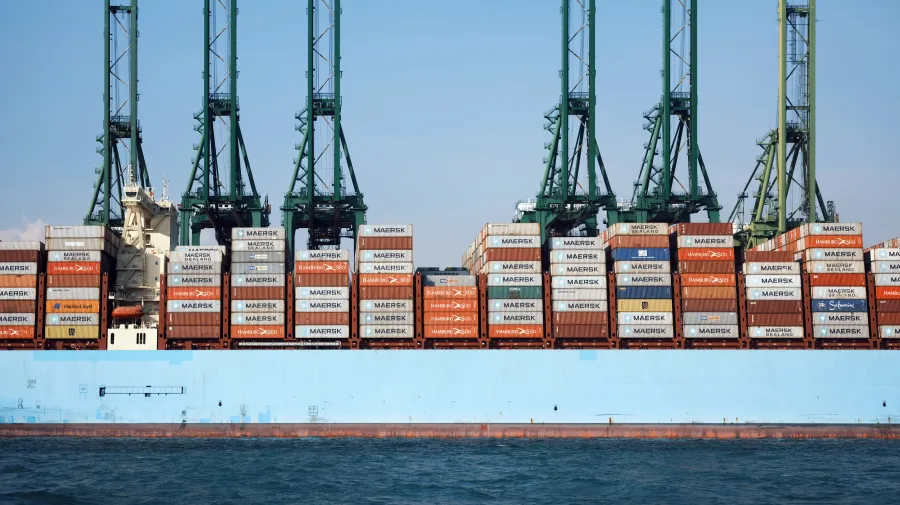As climate-related threats escalate and global regulations tighten, businesses can no longer afford to treat climate risk as a peripheral concern. This is what Julien Denormandie, CIO at Sweep, and David Carlin, creator of the UNEP-FI’s Risk Centre have discussed during this webinar.
Why climate risk management is no longer optional for companies

Climate risk is no longer tomorrow’s problem
Climate risk is no longer a distant concern—it’s unfolding right now. As David Carlin explains, “These are challenges people are facing every day.” From rising sea levels and extreme weather to global policy shifts and market disruptions, climate risk today spans both physical impacts and the transition to a low-carbon economy. “We’ve made the mistake of talking about climate as future risks,” he says. “But I’m here to tell you: it’s now—not five years from now, not 2050.”
Julien confirms: “Climate risk is something that you have to include in your day-to-day business”.
Climate risk management: A strategic business process
Climate risk is closely tied to your supply chain. That’s why it’s essential to map your supply chain and assess both the carbon emissions and sustainability maturity of all your suppliers. Julien emphasized that managing climate risk must be treated with the same data approach as financial risk. “Climate risk management is not a side project,” he said. “It’s a core business process. If you manage finances with data and governance, you need to do the same with climate.”
This means:
- Establishing systems that collect and organize data organization-wide.
- Building repeatable, auditable processes for identifying, assessing, and responding to risk.
- Integrating climate risk into cross-functional decision-making.
Making the Business Case: ROI and Opportunity
Getting buy-in across the business is one of the biggest hurdles sustainability leaders face. Julien and David provided two persuasive lenses through which to frame the value of climate risk management:
1. Avoided costs and resilience
“Climate-related costs are already here,” Julien explained. “They’re hidden in insurance premiums, in supply chain disruptions, in stranded assets.” Taking proactive steps now is cheaper than paying the price of inaction later.
2. Risk is a portal to opportunity
“Every risk comes with an opportunity,” Julien said. “When we understand where the business is exposed, we can innovate faster, gain competitive advantage, and even win new business.”
Julien also pointed out that the IROs included in the CSRD push companies not only to assess risks but also to identify related opportunities. “It’s not just about downside protection,” he said. “It’s about value creation.”
Executive priorities: What leaders should focus on now
Looking ahead, David outlined two key actions every business leader should prioritize:
- Assess Vulnerabilities: “Look at where you’re most exposed—whether it’s in your supply chain, operations, or assets,” he advised. “You can’t build resilience if you don’t understand where you’re vulnerable.”
- Build continuity plans: “Climate risk is a question of business continuity. Ask yourself: if your main supplier floods tomorrow, what’s your Plan B? Most companies don’t have an answer—and that’s a real threat.”
AI’s emerging role in climate resilience
Both speakers highlighted the transformative role artificial intelligence can play:
- Operational protection: “AI is already helping us shut down systems preemptively to avoid damage,” Julien said, referencing turbines and solar panels that respond to real-time weather data.
- Data transparency: “You can’t see every tier of your supply chain—but AI can help uncover risks you didn’t even know you had,” David added.
- Board-level insights: AI also helps convert massive amounts of climate data into meaningful business intelligence.
This is precisely how Sweep’s AI can help you, giving you transparency and insights that will help you navigate and reduce risks.
Navigating global regulations
For global enterprises, climate risk management also means regulatory navigation.
David encouraged companies to “map your regulatory exposure—not just where you operate, but where your suppliers operate.” He stressed that even companies not directly covered by regulations like the CSRD might find themselves indirectly impacted through buyer or investor pressure.
Julien added, “Don’t wait for the law to come to you. The smart money is on taking no-regret actions today that build long-term resilience—like tracking emissions, assessing supplier risk, and developing climate adaptation plans.”
Why early action matters
Julien closed with a compelling reminder: “The companies that move early aren’t just avoiding risk—they’re building trust, winning tenders, and attracting investment.”
This isn’t a matter of intuition, it’s backed by clear market signals. As Julien explained, major companies issuing RFPs are increasingly prioritizing sustainable suppliers. “They’re assessing carbon footprints, water and waste management, and the broader risks linked to climate impacts on supply chains,” he said.
What’s more, climate-related disclosures are becoming a decisive factor for investors. In today’s uncertain environment, Julien warned, “If you can’t provide clear evidence of long-term sustainability, you won’t be able to raise capital.”
Conclusion: From risk to resilience
Climate risk is no longer a hypothetical. It’s here, it’s material, and it’s affecting business performance. Organizations that view it as an opportunity—rather than a burden—will not only comply with regulations but thrive in a volatile world.
Sweep can help
Sweep is a carbon and ESG management platform that empowers businesses to meet their sustainability goals.
Using our platform, you can:
- Conduct a thorough assessment of your carbon footprint.
- Get a real-time overview of your supply chain and ensure that your suppliers meet your sustainability targets.
- Reach full compliance with the CSRD and other key ESG legislation in a matter of weeks.
- Ensure your sustainability information is reliable by having it verified by a third party before going public.





